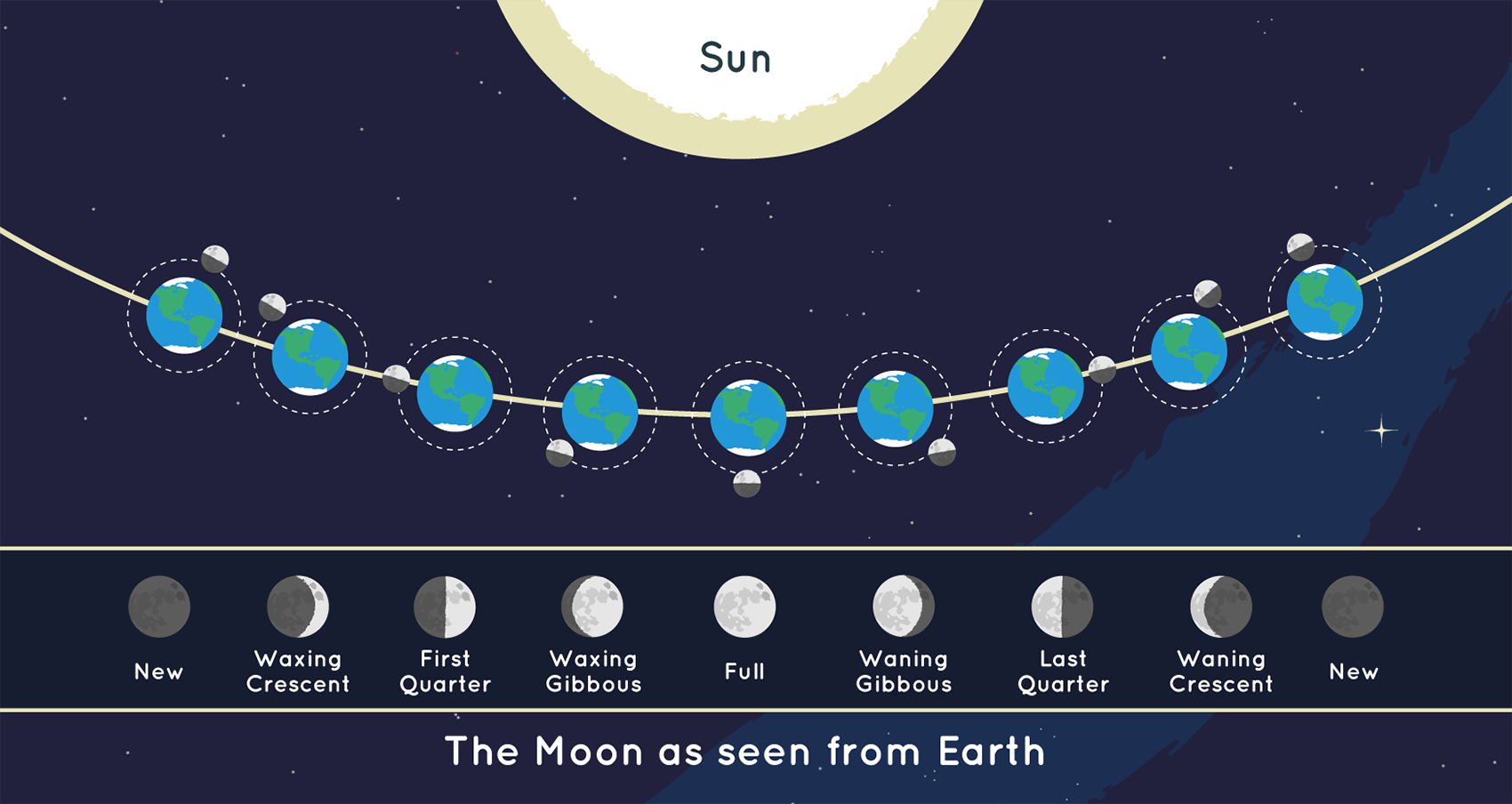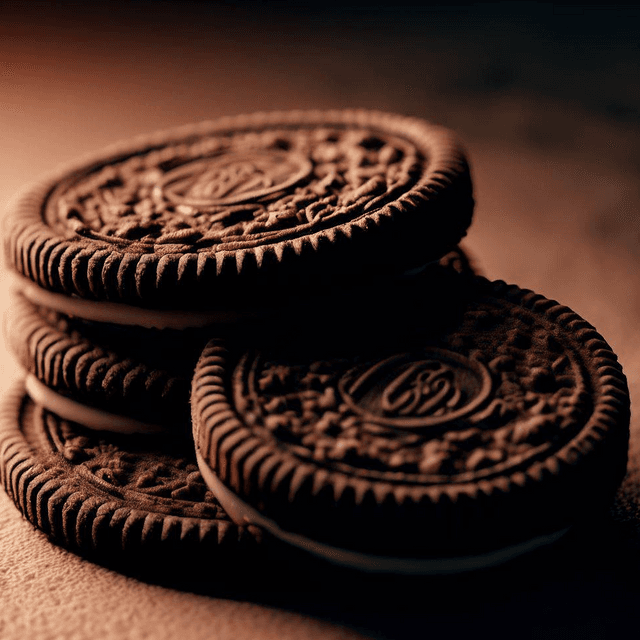1) Learn about the moon phases before doing the oreo moon phases activity.
Younger kids can learn about the 4 moon phases: new moon, first quarter moon, full moon, and last quarter moon.
Older kids can learn about the 8 moon phases: new moon, waxing crescent moon, first quarter moon, waxing gibbous moon, full moon, waning gibbous moon, last quarter moon, and waning crescent moon.
The Moon Phases

Photo credit: NASA/JPL-Caltech
new moon phase
The Moon is invisible because the side that gets sunlight is facing away from us. The Moon rises and sets at the same time as the Sun and is mostly up during the day.
waxing crescent moon phase
We see a thin sliver of the Moon because only a small part of the illuminated side faces Earth. The visible part gradually gets bigger each day as the Moon moves in its orbit.
first quarter moon phase
The Moon has completed a quarter of its monthly journey around Earth. You can see half of its illuminated side. A first quarter moon rises around noon and sets around midnight. The best time to view it is during the evening when it's highest in the sky.
waxing gibbous moon phase
Most of the illuminated side of the moon is now facing Earth, with more than half of the moon visible, though not completely.
full moon phase
During the Full Moon phase, we see the entire side of the Moon illuminated by the Sun. The Moon is on the opposite side of the Earth from the Sun, which is why it appears fully lit.
waning gibbous moon phase
During the waning gibbous phase, the Moon starts moving towards the Sun again and more than half of the moon is lit. Now, the opposite side of the Moon reflects the Sun's light, making the previously lit side appear to shrink.
third quarter moon phase (Last quarter moon phase)
The moon is again half lit, but on the other side when compared to the first quarter moon.
waning crescent moon phase
The Moon is getting close to the point in its orbit where its dayside is facing the Sun directly, so we only see a thin curved shape.
Now that we've gone through all the moon phases, you're ready for the oreo moon phases activity!
1) Put 8 Oreo cookies on a plate and carefully open up the cookie sandwich so that the cream filling is left on one cookie. The white Oreo cream filling represents the lit portion of the moon. When the moon is completely lit up, it's a full moon. The dark cookie represents the part of the moon not lit by sunlight. When the moon is completely dark, it's a new moon.
2) With a popsicle stick or kid-friendly knife, carefully scrape away the white cream filling according to the diagram of the moon phases to make the other moon phases. Put the excess cream filling on the second plate.
3) Compare the moon phases to see how the Moon changes shape in relation to the position of the Moon, the Sun and the Earth.


